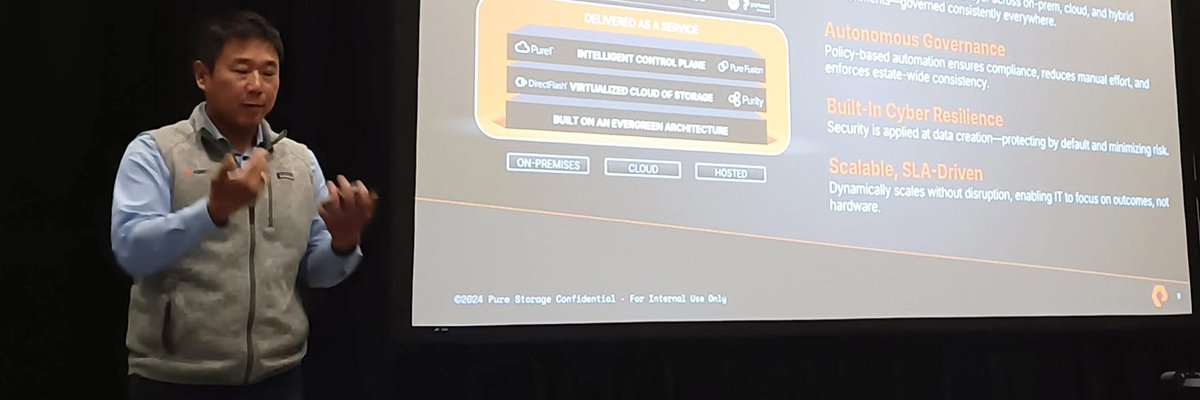Pure Storage has launched Enterprise Data Cloud (EDC), which knits together several existing elements in its offering to provide enhanced visibility of data storage and simpler policy-based management-oriented outcomes for the business.
It has also announced new high-performance flash arrays and the availability this year of a 300TB (terabyte) Direct FlashModule, including a solid-state drive (see box).
Also added in EDC – and announced at its Accelerate event in Las Vegas this week – is the capability to build in application and workload-specific orchestration that combines storage, server, networking and application configuration.
Mostly, EDC is a bundling of existing Pure Storage architectural elements. These are the Purity storage OS, which is common to all the company’s arrays; Fusion, which allows discovery and management of storage resources; Pure1, which allows for fleet management in terms of performance and detailed management of resources; and Evergreen, which is the company’s consumption purchasing offer that allows for as-a-service procurement.
But it is a bundling of existing elements that leans into the established mainstream of cloud operating models and builds on common architectural and operating environment elements across the Pure Storage range.
All this combines to provide a cloud-like storage management environment that Pure intends will allow customers to implement “declarative, policy-driven management”, said chief technology officer Rob Lee (pictured above).
The way Pure executives presented EDC is that it provides “higher-level concepts” in storage management that will allow customers to focus on business outcomes rather than managing infrastructure. So, instead of administrators having to manage individual arrays and to provision storage at a very granular level – configuring volumes on a specific array for specific application requirements – that will be superseded by workload-focused outcomes.
“If we look at a lot of the challenges we see customers grappling with today, it boils down to a lot of the elements that really are legacy,” said Lee. “Things like having to do a lot of manual management, driving inefficiency, having to manage tons of individual silos that aren’t making maximal use of the resources that you have on the ground.”
He continued: “We’ve got an opportunity to take some of those lessons from the consumer world, take some of the lessons from the public cloud world, and bring those into the enterprise.”
In other words, customers won’t need to specify storage management activity step-by-step, but will allow the system to decide the details. This, in turn, will allow greater visibility and control over data for the organisation.
“I can transform how I think about, manage, catalogue my datasets, and think about what data I have sitting where, for what purpose, where it came from, how it is secured, what policies are provided for it, etc,” said Lee. “Right now, with too many data footprints, those are questions that can’t even be answered because people don’t have a good handle on what data is sitting where.”
EDC will allow IT organisations to provide storage from on-premise and cloud capacity. It will not be able to directly include storage capacity from third parties, although it will talk to other suppliers’ storage provisions via application workload templates that are another key part of the EDC announcement.
Pure has said it will deliver thousands of orchestrated workflows for specific applications. These connect the Pure environment to third-party applications, such as Cisco, VMware, ServiceNow and Slack. Pure executives term these “recipes” that customers can build for specific applications, with wider collections, or “menus”, possible for multiple applications and workloads. It also expects that customers will write their own or get them from third parties.
Additionally, Pure has partnered with data protection provider Rubrik, where the latter’s cyber monitoring capability triggers Pure snapshots to give the most recent possible snapshot prior to infection by ransomware or the like.
Last year, Pure announced AI Copilot, which allowed customers to interact with their storage at the fleet level and ask questions about it in natural language. That went from beta to general availability at this year’s event.
Also last year, Pure launched Pure Protect, which offers disaster recovery as a service. Then it offered recovery to the Amazon Web Services (AWS) cloud. At this year’s event, it announced that customers would be able to recover VMware environments to a second VMware deployment.
